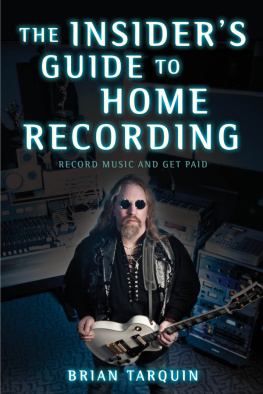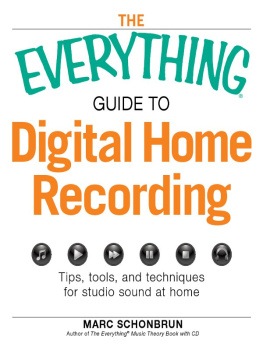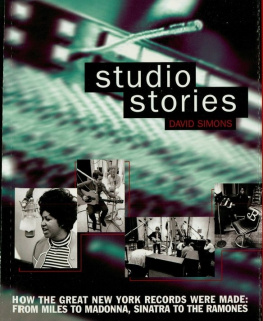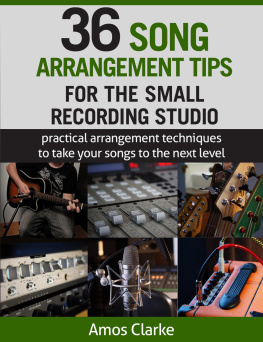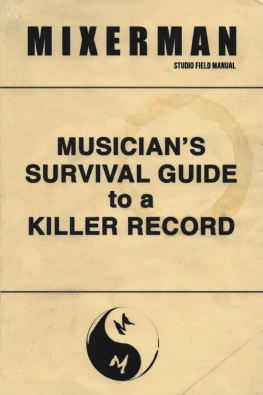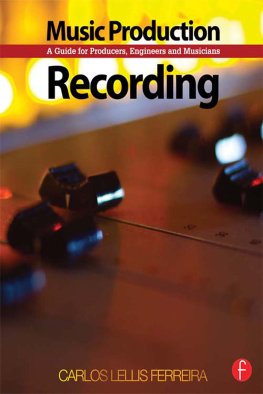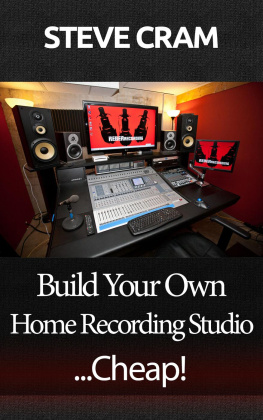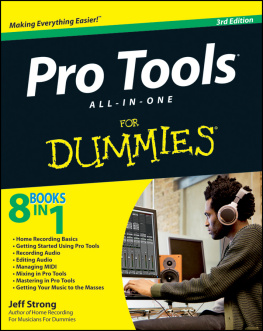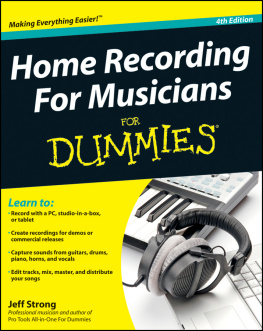Copyright 2015 by Brian Tarquin
All rights reserved. Copyright under Berne Copyright Convention, Universal Copyright Convention, and Pan American Copyright Convention. No part of this book may be reproduced, stored in a retrieval system, or transmitted in any form, or by any means, electronic, mechanical, photocopying, recording or otherwise, without the express written consent of the publisher, except in the case of brief excerpts in critical reviews or articles. All inquiries should be addressed to Allworth Press, 307 West 36th Street, 11th Floor, New York, NY 10018.
Allworth Press books may be purchased in bulk at special discounts for sales promotion, corporate gifts, fund-raising, or educational purposes. Special editions can also be created to specifications. For details, contact the Special Sales Department, Allworth Press, 307 West 36th Street, 11th Floor, New York, NY 10018 or .
15 14 13 12 11 5 4 3 2 1
Published by Allworth Press, an imprint of Skyhorse Publishing, Inc.
307 West 36th Street, 11th Floor, New York, NY 10018.
Allworth Press is a registered trademark of Skyhorse Publishing, Inc., a Delaware corporation.
www.allworth.com
Cover design by Mary Belibasakis
Cover photo credit Erik Christian Photography
Library of Congress Cataloging-in-Publication Data is available on file
ISBN: 978-1-62153-445-7
Ebook ISBN: 978-1-62153-450-1
Printed in the United States of America
Table of Contents
Introduction
Nowadays, its taken for granted that musicians have the option of recording their music at home. Affordable high-quality hardware and software tools designed for each step in the music production process are widely available. Choices abound, ranging from high-end to entry-level gearoften in portable packages, from laptops and 2-channel audio interfaces all the way down to pocket-sized digital recorders and smartphones running basic recording apps. Opportunities for musicians to produce their own (and their friends or clients) musical projects are most definitely out there.
At the start of the twenty-first century, many manufacturers of professional audio products took a growing interest in developing budget-priced products for home-based end-users, to give them an entry point. Thanks largely to advances in technology combined with falling prices, personal studios of all sizes and budget levels, great and small, have become commonplace across the broader musical landscape as the home recording market continues to expand. And professional, full-time mixing and mastering engineers working in personal and commercial facilities now receive a sizeable percentage of their projects from musicians who record at home.
Home recording studios are nothing new, of course; they have existed in some form or another for decades. Les Paul experimented at home with tape and audio equipment, and pioneered the concept of multi-track recording in 1949. Sir Paul McCartney famously produced his 1970 debut solo album, McCartney , at home using a four-track Studer tape machine. But I think the current proliferation of personal studios belonging to working and hobbyist musicians traces its roots to the late 1970s when the Tascam PortaStudio four-track cassette recorder was introduced.
Its been an exciting ride for me in witnessing and experiencing the evolution of the personal studio market since I entered a home studio for the first time in 1986. Im privileged to have learned and written about music production since 1998 through interviews with artists, engineers, and producers as a staff editor for Music & Computers , Electronic Musician, and, since 2006, Mix magazine.
Several years ago, while working for Mix , I discovered the work and career of this books author, Brian Tarquin. A multiple Emmy Awardwinner for his music composition and direction, Brian has appeared in the pages of Mix , as well as other respected music and audio magazines, numerous times to discuss his varied endeavors. I was immediately impressed and inspired by a story about his Bohemian Productions label, which I proofread for Mix s April 2007 issue. He talks in clear detail about how he designed his personal studio, Jungle Room Studios (which at that time was located in Nyack, New York), incorporating both analog and digital equipment to accommodate a fast-paced workflow to best handle tight deadlines for TV and album projects. I liked his ideas and philosophy, and became a fan of his work from that point forward. I also think that his foundation as a guitarist in pursuit of the best possible sounds and tones served him well when he expanded his interests into engineering and producing.
Later on, I interviewed Brian about sessions for his album Les Paul Dedication: Guitar Masters Vol. 3 & 4 (2010), and then about the launch of his online production music library, TV Film Trax, and the design and construction of his current Jungle Room Studios inside a two-hundred-year-old house on a farm in the Catskills in upstate New York (2012). In each story, Brian very informatively describes his thought process behind his work: how he strategized the transformation of the farm house into a comfortable, pleasant, and highly efficient studio environment; his old-school preference for recording to analog gear, and the ways in which he interfaces digital audio workstations like Pro Tools and Logic with tape; how he sets up a rhythm section in his tracking room; his microphone choices and placements, and how they affect the mix down the road; the interaction of microphones, amplifiers, and room; the differences between recording an instrumental guitar album and producing cues for TV or film.
Because Brian is so thorough, thoughtful, passionate, and engaging when it comes to sharing his knowledgeand because of the wisdom he gained through his experiences in music over more than twenty yearsI was excited when I learned that he had written The Insiders Guide to Home Recording . As a musician who started working in commercial studios in the 80s, learned to be an engineer on analog gear at a recording school just as digital equipment was being introduced, and then went on to build three top-notch personal studios and a multifaceted successful freelance career, Brian is in a perfect position to help you understand how best to choose, set up, and use your own studio space.
And he understands that musicians are creative people who dont want to get bogged down with excessive technical details that take time away from the music. The Insiders Guide to Home Recording gets down to business and covers the most essential topics, from start (selecting the right space) to finish (mixing)with vital information in between about choosing equipment, understanding the engineers role and the producers role, and recording techniques.
As with music production equipment, there are many choices out there when it comes to books about building and recording in home studios. I invite you to jump into The Insiders Guide to Home Recording and enjoy the journey.
Matt Gallagher
Mix magazine
June 2014
Foreword
The home recording industry has become such a lucrative business for pro audio manufacturers in the past two decades. In the past, it was berated with a tsunami of harsh criticism and insults, something not to be taken seriously. But this all changed when, in the early 90s, we started seeing the digital revolution creep into our lives. Things like the DAT recorders (Digital Audio Tape), ADAT (Alesis Digital Audio Tape), and the Tascam DA-88. These were digital multi-track recording devices that used various size cartridges to record music digitally. The ADAT used the VHS tape that was very popular in the 80s to record and watch movies on, where the DA-88 used the smaller cartridge format like the Hi8 used on camcorders. The DAT format was a two-track mix down format, whereby the ADAT and DA-88 were eight-track format, in which you could hook up to three machines together to achieve twenty-four multi-track recording. This was the dawn of a new age and from that point on everything progressed until we reached todays standards of computer hard drive recording.

